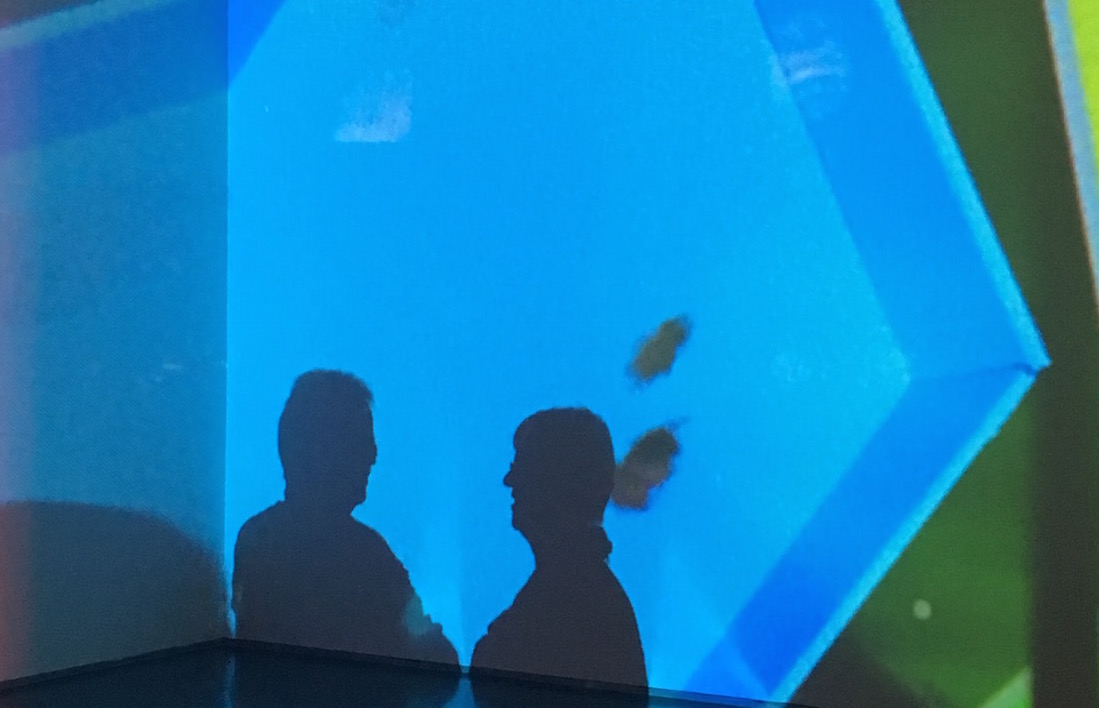By Lauren Ball
As if entering hallowed ground, stepping into an art museum implies formality. We try not to click our heels too loudly against the wood floor. We make ourselves as small as possible to avoid blocking the views. And, somewhere in there, we attempt quiet contemplation. This type of learned behavior is exactly what renowned video installation artist Diane Thater destroys.
Wandering through the spaces Thater creates, the initial effect of color is dizzying. Her current exhibition, the Sympathetic Imagination at Chicago’s Museum of Contemporary Art, saturates walls in light projections of glowing red and darkened shades of blue, every segment of space carefully cultivated for spontaneous interaction and response. Thater rebels against the typical gallery convention of a framed picture on a simple white wall.
“This building, in particular, gives me a great opportunity to grow with the architectural elements,” said Thater at an MCA public artist’s talk. “These are not just white surfaces. They have this wonderful vaulted ceiling that I can work with, and use to sculpt the artwork.”
Thater began her career in Los Angeles in the early 1990s and her use of video installation as a medium has transformed over the past couple of decades. Projecting only rectangular images on a darkened wall at her first show, her exhibitions now explode with experimentations of color, variations of light, and differing mediums of video, from film to digital. But this artistic growth evolved along with bouts of hardship.
“I felt very alone (in my work),” said Thater of her beginnings as an artist. “I had this professor, Patti Podesta, who was a film and video artist, and worked in experiments with time, space, and narrative. But she didn’t do things like this, and I kept thinking ‘What could I add to this medium that would transform it and make it new again?’”
Within Knots + Surfaces, one of Thater’s largest projections, honeybees wildly skim the wall’s surface while surrounded by colorful hexagonal structures, creating a multi-dimensional impression. “I started to experiment with breaking video images out of the rectangle,” said Thater of Knots + Surfaces. “I wanted to break into architecture and work spatially because, for me, installation is halfway between sculpture and architecture.”
Perhaps the most unprecedented theme that courses throughout Thater’s work is the inclusion of the audience as forms moving within the installations and as part of them. “We’re seeing, in these videos, the shadows of viewers melting into the piece,” said Joey Orr, MCA postdoctoral fellow and curator. “That’s something that (Thater) very much welcomes and engineers into the work.” While Thater’s light show buzzed and oscillated within various wall crevices and surfaces, darkened silhouettes continuously broke up the displayed images.
“I have always wanted viewers to penetrate the projections,” said Thater. “The idea is that the viewer is never outside of the artwork. I never want them to be outside the work of art, just looking at it. I want them to be inside looking through it, in it, and with it. They should be conscious of their own body’s relationship to the work of art, and of themselves experiencing something in space and time.”
Yet, even after being welcomed to participate in the pieces by the artist herself, viewers at the October 29 exhibition debut seemed hesitant to walk in front of, or even near, the projection devices. Some shyly opted to wait until others walked out of a room before experiencing the work for themselves.
As I wandered around Thater’s gallery space, ghostly in its silent openness, I came to understand the audience’s general reluctance. To have one’s body displayed in such a public manner is disquieting – viewers have grown to expect art to remain static. Within Thater’s space, we become hyper-aware of our bodies, our breath, our off-kilter walks and flyaway hair. But we also see these imperfections mimicked in the jolted video movements, light leaks, and film grains. In this way, Thater’s work invites us to feel the warmth of acceptance and familiarity.
“I wanted to do something that hadn’t been seen before,” said Thater. “I don’t innovate for the sake of innovation; I innovate for the sake of the content and the medium of the work. I do things that I think need to be done.”


